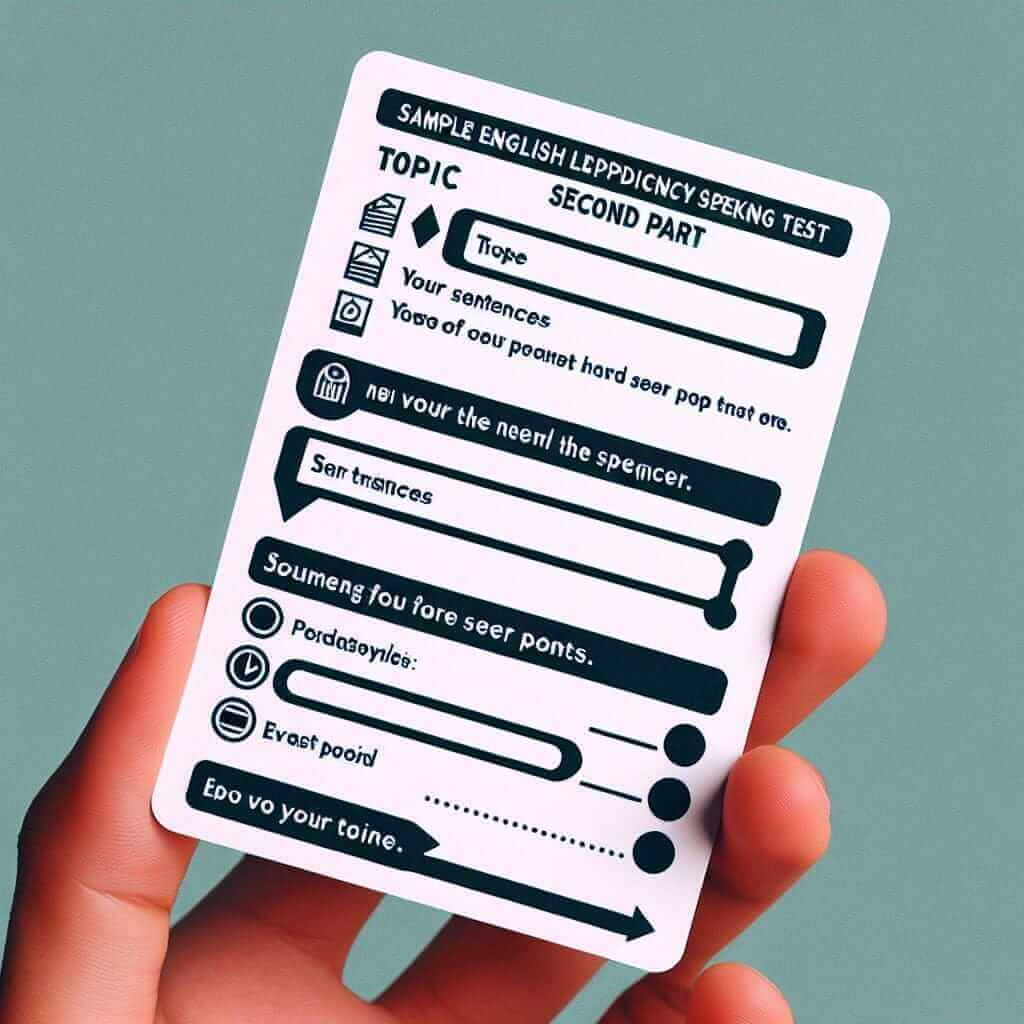The IELTS Speaking test often appears more daunting than it truly is. As an IELTS instructor with over 20 years of experience, I’ve helped countless students conquer their nerves and achieve impressive scores. This guide delves into the heart of the IELTS Speaking test, providing you with the knowledge and strategies to excel.
Understanding the IELTS Speaking Test
The IELTS Speaking test is a one-on-one assessment of your spoken English language proficiency, forming a crucial part of both the IELTS Academic and General Training tests. Unlike the other IELTS modules, the Speaking test is conducted face-to-face with a certified IELTS examiner, making it unique and, for some, a bit nerve-wracking.
Why is the Speaking Test Important?
The Speaking test assesses your ability to:
- Communicate effectively: Can you articulate your thoughts and ideas clearly and fluently?
- Use a range of vocabulary: Do you possess a wide vocabulary and use it appropriately?
- Utilize accurate grammar: Is your grammar accurate and suitable for a range of speaking contexts?
- Demonstrate pronunciation skills: Can you be easily understood, using appropriate intonation and stress?
Format of the IELTS Speaking Test
The test is structured into three parts, each designed to evaluate different aspects of your spoken English:
Part 1: Introduction & Interview (4-5 minutes)
This section involves general questions about yourself, your interests, hobbies, work, or studies. It’s designed to ease you into the test and assess your ability to engage in casual conversation.
Example Questions:
- What’s your favorite time of day?
- Do you enjoy reading?
- Tell me about your hometown.
Part 2: Individual Long Turn (3-4 minutes)
Here, you’ll receive a cue card with a topic and some bullet points to guide your talk. You’ll have one minute to prepare and then speak for 1-2 minutes on the topic.
Example Cue Card:
Describe a time you had to overcome a challenge.
- What the challenge was
- How you felt about the challenge
- What steps you took
- And explain how you felt after overcoming the challenge.

Part 3: Two-Way Discussion (4-5 minutes)
This final part delves deeper into the theme introduced in Part 2. The examiner will engage you in a more abstract and analytical discussion related to the topic.
Example Questions:
- What are the benefits of facing challenges?
- Do you think people become more resilient after overcoming obstacles?
Tips to Achieve a High Score
Here are some valuable tips, gleaned from my years of experience, to help you excel:
- Practice Regularly: Converse in English as much as possible. Record yourself speaking to identify areas for improvement.
- Expand Your Vocabulary: Read widely on various topics. Learn synonyms and practice using new words naturally in your speech.
- Master Grammar: A solid grasp of grammar is essential for clear communication. Focus on tenses, subject-verb agreement, and sentence structure.
- Listen Actively: Pay attention to English spoken in movies, TV shows, podcasts, and conversations to improve pronunciation and fluency.
- Think Before You Speak: Don’t rush your answers. Take a moment to formulate your thoughts before you begin speaking.
- Elaborate on Your Answers: Provide detailed and developed responses. Avoid giving one-word or very short answers.
- Be Confident: Believe in yourself and your abilities. A positive mindset can significantly impact your performance.
Conclusion
The IELTS Speaking test is designed to assess your real-life English communication skills. Remember, it’s not just about what you say, but how you say it. By understanding the test format, implementing effective preparation strategies, and approaching the test with confidence, you can achieve your desired IELTS score.